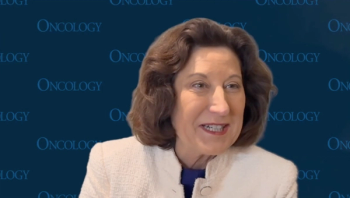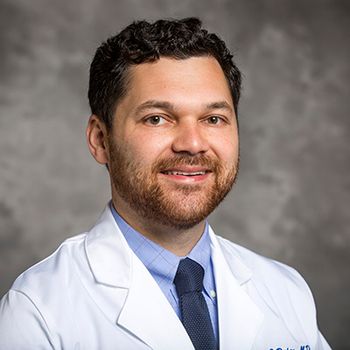
Oncology NEWS International
- Oncology NEWS International Vol 10 No 1
- Volume 10
- Issue 1
Adjuvant Therapy Beneficial in Early, Node-Negative Breast Cancer
BETHESDA, Md-Adjuvant therapy should be offered as an option to node-negative breast cancer patients, even those with tumors smaller than 1 cm, said Bernard Fisher, MD, scientific director of the National Surgical Adjuvant Breast and Bowel Project (NSABP).
BETHESDA, MdAdjuvant therapy should be offered as an option to node-negative breast cancer patients, even those with tumors smaller than 1 cm, said Bernard Fisher, MD, scientific director of the National Surgical Adjuvant Breast and Bowel Project (NSABP).
At the National Institutes of Health (NIH) Consensus Development Conference on Adjuvant Therapy for Breast Cancer, Dr. Fisher reviewed progress made in NSABP studies on early-stage breast cancer since the first NIH consensus conference on the subject in 1985.
In 1985, the panel recommended no therapy other than surgery for breast cancer patients with no lymph node involvement. By the next conference, in 1990, new trial results convinced the consensus panel that the likelihood of a recurrence decreased in node-negative breast cancer with adjuvant combination chemotherapy or with adjuvant tamoxifen (Nolvadex) in node-positive patients. But the panel stated that patients with tumors of 1 cm or less had an excellent prognosis and did not require adjuvant therapy outside of clinical trials.
In 1990, questions remained regarding the effects of tamoxifen in estrogen-receptor (ER)-negative tumors, and about combination chemotherapy plus tamoxifen in ER-positive, node-negative breast cancer. Ten years later, data from six NSABP randomized trials with 11,620 node-negative patients and 8 to 14 years of follow-up are confirming some of the earlier panels’ conclusions, refuting others, and answering the previously unanswerable questions, Dr. Fisher said.
For ER-negative, node-negative breast cancer, improvements in disease-free survival and overall survival have persisted in the NSABP B-13 trial for 14 years with use of methotrexate followed by 5-fluorouracil and leucovorin (M->F) and, in NSABP B-19, for 8 years with use of cyclophosphamide/methotrexate/fluorouracil (CMF). CMF is clearly better for women under age 50, Dr. Fisher said.
A later study, NSABP B-23, compared four treatments: CMF plus placebo; CMF plus tamoxifen; doxorubicin (Adriamycin) and cyclophosphamide (AC) plus placebo; and AC plus tamoxifen. After 5 years of follow-up, no significant differences in relapse-free survival, event-free survival, or overall survival were found among the four groups. Tamoxifen provided no benefit for these ER-negative patients.
Dr. Fisher reviewed results of NSABP B-14, which studied 5 years of tamoxifen for node-negative patients with positive estrogen receptors. With data now 14 years out, he said, "in young and old, tamoxifen works." Benefit was not enhanced when tamoxifen therapy was extended beyond 5 years.
To improve on tamoxifen’s therapy, NSABP B-20 tested tamoxifen alone vs tamoxifen with M->F or CMF in ER-positive patients. At 8 years of follow-up, chemotherapy significantly improved disease-free as well as overall survival.
Recently reported results from NSABP B-21 indicate that tamoxifen cannot replace radiation after lumpectomy for controlling ipsilateral breast tumor recurrence (IBTR) in patients with tumors 1 cm or less, Dr. Fisher said.
For women who received tamoxifen alone, the rate of IBTR was 23.3 per 1,000 patients per year. Those who received radiation therapy plus placebo had a recurrence rate of 11.7 per 1,000 patients. The recurrence rate for women who received radiation therapy plus tamoxifen was 3.4 per 1,000 patients per year.
Small Tumors
With the expanding use of screening mammography, more women are being diagnosed with tumors 1 cm or smaller. Dr. Fisher reviewed a combined analysis of five NSABP randomized trials in patients with small tumors. At 8 years, in ER-negative patients, recurrence-free survival improved by almost 10 percentage points when chemotherapy was added after surgery; overall survival was similar in both groups. For patients with ER-positive tumors, tamoxifen plus chemotherapy significantly improved both recurrence-free survival and overall survival, he noted.
"As the prognosis for breast cancer becomes better, treatment decisions become more difficult," Dr. Fisher said. Women may have a sufficiently good prognosis that negates the need for treatment, but knowing who should defer adjuvant treatment is difficult.
Dr. Fisher concluded that prognosis, although favorable, is not sufficiently so for all women with tumors 1 cm or smaller to warrant dismissing systemic therapy as a possible option.
Based on presentations by Dr. Fisher and others, the November 2000 NIH consensus panel stated that, for women with tumors 1 cm or smaller, the decision to consider chemotherapy should be individualized.
The panel concluded that adjuvant hormonal therapy is appropriate for ER-positive patients, regardless of tumor size, but that premenopausal women with tumors less than 10 mm in size who wish to avoid the symptoms of estrogen deprivation may decide against taking the therapy.
Articles in this issue
almost 25 years ago
ODAC Recommends Campath for FDA Approval for Refractory CLLalmost 25 years ago
‘IrinoGem’ Active and Well Tolerated in Pancreatic Canceralmost 25 years ago
STI571 Studies Help Validate Molecular Targeting in CMLalmost 25 years ago
Outpatient Mylotarg Therapy Cuts Costs in Relapsed AMLalmost 25 years ago
STI571 Proves Effective in Patients With Interferon-Failure CMLalmost 25 years ago
Prostate Cancer Patients Tolerate Higher 3D Conformal RT Dosesalmost 25 years ago
IP6 (Phytic Acid) Inhibits Breast Cancer in Animalsalmost 25 years ago
Medicare Increases Payment Rates for Most Physiciansalmost 25 years ago
Update on High-Dose Consolidation Therapy in Breast Canceralmost 25 years ago
Lessons Learned From Large Lung Cancer Screening ProgramNewsletter
Stay up to date on recent advances in the multidisciplinary approach to cancer.















































































